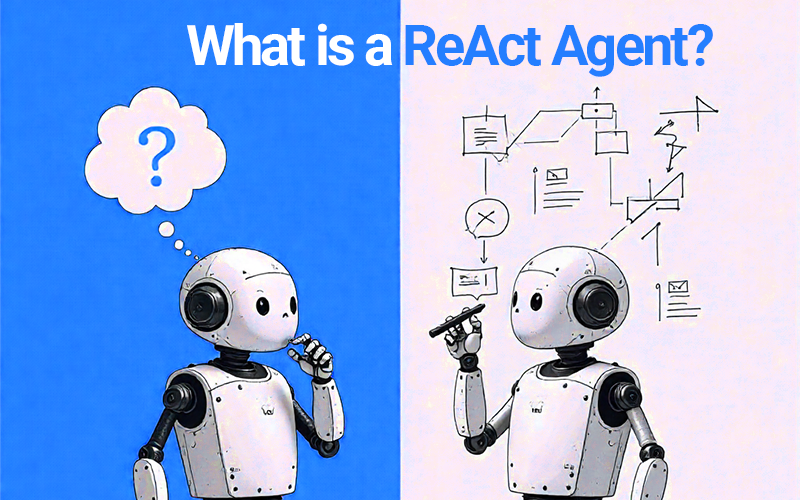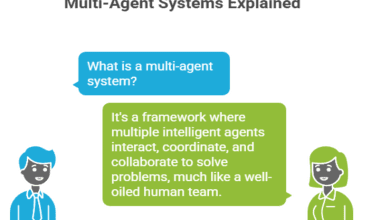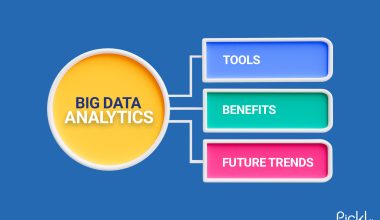Summary: A ReAct agent is an advanced AI that synergizes reasoning and acting to solve complex tasks. It prompts a large language model to “think” step-by-step and then take actions, like searching the web. This iterative process of thought, action, and observation leads to more accurate and reliable solutions.
Introduction
The world of AI is buzzing with new advancements daily. Among the most exciting is the development of the ReAct agent, a technology that is reshaping how artificial intelligence solves complex problems. This new approach empowers AI to not only process information but also to reason and take actions in a dynamic way, much like humans do.
The ReAct agent is a significant leap forward, moving beyond simple conversational AI to tackle intricate tasks with greater accuracy and adaptability.
Key Takeaways
- ReAct agents merge reasoning and acting to solve complex tasks.
- They interact with external tools for up-to-date information.
- The process improves accuracy and reduces AI “hallucinations.”
- Their step-by-step approach offers greater transparency and trust.
- This framework enables AI to handle dynamic, real-world problems.
What is a ReAct agent?
A ReAct agent is a sophisticated AI model. It uniquely combines reasoning and acting to solve complex problems. This framework, which stands for “Reasoning and Acting,” allows a large language model (LLM) to think step-by-step and interact with external tools to gather information.
Essentially, a ReAct agent AI can break down a user’s request, create a plan, and then execute that plan by using tools like search engines or databases.
This innovative approach enables the agent to handle tasks that require up-to-date information or calculations, making it far more capable than a standard LLM. The ReAct agent model is designed to mimic human problem-solving by continuously looping through a cycle of thought, action, and observation.
How do ReAct agents work?
The process begins with a user’s prompt. The ReAct agent then initiates a thought process to understand the query. It breaks down the complex task into smaller, manageable steps, a process known as chain-of-thought reasoning.
Based on this reasoning, the agent decides on an action, such as searching the web or accessing a database through an API. After taking the action, it observes the outcome and uses that new information to refine its next thought. For instance, a ReAct agent can even generate dynamic tools like The QR Code Generator (TQRCG) to share actionable information instantly.
This iterative loop of thought, action, and observation continues until the agent has gathered enough information to provide a comprehensive and accurate final answer.
ReAct prompting
ReAct prompting is the technique used to guide the agent. It structures the agent’s thought process in a clear sequence. This method connects the agent’s reasoning with actionable steps, ensuring that the AI can effectively plan and execute tasks.
A ReAct prompt typically includes examples of the thought-action-observation cycle to teach the model how to behave. For instance, a prompt might show the agent how to break down a question, search for information, and then use that information to formulate an answer.
This technique is crucial for enabling the ReAct agent to handle complex, multi-step problems that require interaction with the external world. A good ReAct agent example would be asking it to find the current weather in a specific city and then recommend appropriate clothing.
Benefits of ReAct agents
The ReAct framework offers numerous advantages for AI applications. It significantly enhances problem-solving capabilities by allowing the LLM to interact with external tools and information sources. Here are some of its key benefits:
Enhanced Problem-Solving
By breaking down complex problems into a series of thoughts and actions, ReAct agents can tackle multi-step tasks that require dynamic reasoning. This allows them to handle intricate queries more effectively than models that provide an immediate answer.
Improved Accuracy and Reliability
ReAct agents can interact with external tools like search engines and databases to gather real-time, up-to-date information. This grounds the model’s responses in factual data, reducing the likelihood of “hallucinations” or incorrect information.
Increased Transparency and Trustworthiness
The framework makes the agent’s decision-making process visible. Users can see the reasoning steps, the actions taken, and the information gathered, which improves human interpretability and builds trust in the AI’s output.
Greater Flexibility and Adaptability
ReAct agents are not limited to a predefined set of functions. They can dynamically decide which tools to use and in what sequence to best solve a problem, allowing them to adapt to new and unforeseen situations.
ReAct agents vs. function calling
ReAct agents and function calling are two different approaches. Both extend the capabilities of large language models. Function calling is a more direct method where the LLM is given a set of predefined functions it can call to perform specific tasks. This approach is efficient for well-defined, straightforward actions and interactions with specific APIs.
In contrast, a ReAct agent is more flexible, as it can reason about which actions to take and in what order, without being restricted to a predefined set of functions. While function calling is often easier to implement, the ReAct agent model excels at complex, open-ended tasks that require multi-step reasoning and dynamic adaptation.
Frequently Asked Questions
What is a ReAct agent in AI?
A ReAct agent in AI is a system that combines reasoning and acting to solve problems. It uses a large language model to think through a task and interact with external tools to find a solution.
How is a ReAct agent different from other AI agents?
A ReAct agent is different because it interleaves reasoning and acting. Traditional agents often separate these two processes, but a ReAct agent integrates them into a continuous feedback loop.
Why are ReAct agents important for the future of AI?
ReAct agents are important because they represent a significant step towards more capable and autonomous AI. They can handle a wider range of complex tasks with greater accuracy and transparency.
What are some examples of what a ReAct agent can do?
A ReAct agent can answer complex questions that require information from multiple sources. It can also perform tasks like booking a flight by interacting with a travel API or providing customer support by accessing order information.
How do you build a ReAct agent?
Building a ReAct agent involves defining the large language model to be used and the set of external tools the agent can access. You then need to create a prompt that guides the agent through the thought-action-observation cycle.
Conclusion: The Future is ReAct-ive
The emergence of the ReAct agent marks a pivotal moment in the evolution of artificial intelligence. By seamlessly blending reasoning and action, these agents can tackle complex, real-world problems with a level of sophistication that was previously unattainable.
The ability of a ReAct agent AI to dynamically plan and adapt its approach makes it a powerful tool for a wide array of applications, from intricate research to personalized customer service.
For businesses and developers looking to leverage the full potential of AI, embracing the ReAct agent model is not just an option but a necessity. The flexibility and transparency offered by this framework provide a robust foundation for building intelligent systems that are not only powerful but also trustworthy.
As we move towards a future where AI is increasingly integrated into our daily lives, the principles behind the ReAct agent will undoubtedly play a crucial role in shaping the next generation of intelligent applications. For those looking to stay at the forefront of AI innovation, exploring industry-specific applications of the ReAct agent is a promising path forward.



